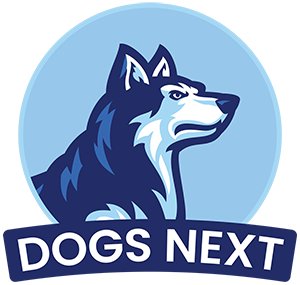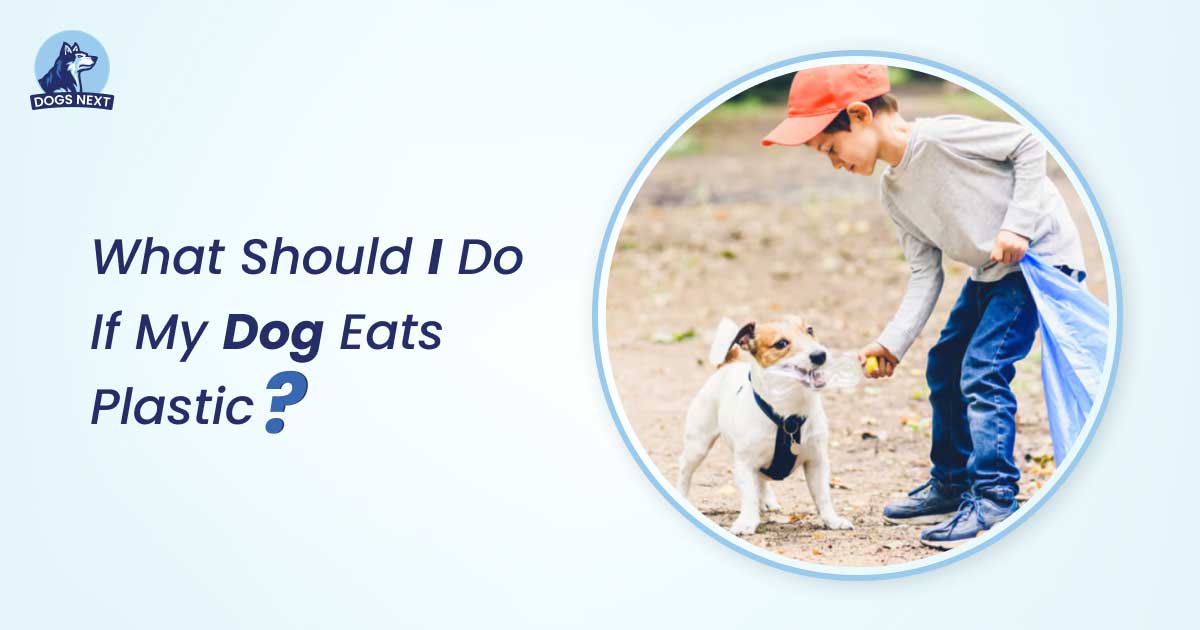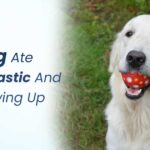If your dog eats plastic, contact your veterinarian immediately. Watch for signs of distress or blockage.
Dogs sometimes chew or swallow plastic items, which can pose serious health risks. Plastic can cause blockages, choking, or internal injuries. Swift action is crucial to prevent complications. Your vet may suggest an immediate visit or offer guidance over the phone.
Monitoring your dog for vomiting, lethargy, or difficulty passing stool is essential. Keeping harmful items out of reach and providing safe chew toys can prevent future incidents. Ensuring your dog’s safety and well-being requires prompt attention and preventive measures.
Immediate Steps After Your Dog Eats Plastic
Dogs are curious creatures and sometimes, they might eat something they shouldn’t, like plastic. Eating plastic can be dangerous for your furry friend and requires immediate attention. Knowing the right steps to take can help ensure your dog’s safety and well-being.
Check For Signs Of Distress
First, check your dog for any signs of distress. Look for vomiting, choking, or difficulty breathing. If your dog shows any of these signs, seek immediate veterinary care.
Inspect Your Dog’s Mouth
Next, carefully inspect your dog’s mouth. Gently open it and look for any visible pieces of plastic. If you see any, try to remove them carefully to prevent choking.
Monitor Your Dog Closely
After removing visible plastic, monitor your dog closely. Watch for any changes in behavior or health. Pay attention to vomiting, diarrhea, or lack of appetite.
Contact Your Veterinarian
Always contact your veterinarian after your dog eats plastic. Describe the situation and follow their advice. They may suggest bringing your dog in for an examination.
Prepare For A Vet Visit
If advised to visit the vet, prepare by gathering information. Note the type of plastic ingested, how much was eaten, and the time it happened. This helps the vet assess the situation accurately.
Offer Water, But No Food
While waiting for veterinary advice, offer your dog water. Avoid giving food, as it might complicate the situation. Keeping your dog hydrated is crucial.
Prevent Future Incidents
To prevent future incidents, keep plastic items out of reach. Store plastic bags, toys, and containers in secure locations. Educate family members about the importance of keeping plastic away from pets.
| Step | Action |
| 1 | Check for distress signs |
| 2 | Inspect the mouth |
| 3 | Monitor closely |
| 4 | Contact the vet |
| 5 | Prepare for a vet visit |
| 6 | Offer water |
| 7 | Prevent future incidents |
Assess The Situation
Dogs are curious creatures and sometimes they chew on things they shouldn’t. If your dog eats plastic, it’s important to stay calm and assess the situation. Knowing what steps to take can help ensure your dog’s safety and well-being. This section will guide you through assessing the situation effectively.
Check The Type And Amount Of Plastic Consumed
First, determine the type and amount of plastic your dog has ingested. Different types of plastic pose various risks. For example:
- Soft Plastic: This includes items like plastic bags or food wrappers. These can cause blockages in the digestive tract.
- Hard Plastic: This includes items like toys or containers. Hard plastic can cause internal injuries or blockages.
- Sharp Plastic: This includes items like broken toys or shards. Sharp plastic can cause cuts or tears in the digestive system.
Next, estimate how much plastic your dog has consumed. A small piece might pass through the system, but larger pieces can cause serious issues. If you’re unsure about the amount, it’s best to consult a vet immediately.
Here’s a quick reference table to help you:
| Type of Plastic | Potential Risks |
| Soft Plastic | Blockages |
| Hard Plastic | Internal injuries, Blockages |
| Sharp Plastic | Cuts, Tears, Blockages |
Monitor Initial Symptoms Or Distress
After identifying the type and amount of plastic ingested, closely monitor your dog for any symptoms or signs of distress. Early detection can be crucial in preventing serious health issues. Key symptoms to watch for include:
- Vomiting: Frequent or persistent vomiting can indicate a blockage or internal injury.
- Lethargy: If your dog appears unusually tired or inactive, it could be a sign of discomfort or pain.
- Loss of Appetite: Refusing food or water can be a sign of gastrointestinal distress.
- Abdominal Pain: If your dog shows signs of pain when you touch its abdomen, it could indicate a blockage.
- Changes in Bowel Movements: Diarrhea or difficulty passing stool can be signs of a blockage or irritation.
Monitor your dog for at least 24 to 48 hours. If any of these symptoms appear, contact your vet immediately. Document any changes in behavior or symptoms to provide accurate information to the vet.
Being vigilant and proactive can make a significant difference in your dog’s recovery. Always keep a close eye on your pet and don’t hesitate to seek professional help if needed.
Potential Risks Of Dogs Eating Plastic
If your dog eats plastic, it can be very worrying. Understanding the potential risks can help you act quickly. Plastic can cause many health issues for dogs. Knowing these risks is crucial for your dog’s safety.
Intestinal Blockages
Plastic can cause intestinal blockages. This means the plastic gets stuck in your dog’s intestines. Blockages can prevent food and water from passing through. Your dog might vomit or stop eating. This is an emergency and needs a vet visit.
Choking Hazards
Plastic pieces can be choking hazards. If your dog swallows a large piece, it can get stuck in the throat. This can make it hard for your dog to breathe. Fast action is needed to remove the plastic and save your dog.
Gastrointestinal Irritation
Swallowed plastic can cause gastrointestinal irritation. This means the plastic can scratch and damage the stomach and intestines. Your dog may experience pain, vomiting, or diarrhea. This irritation can lead to more serious problems if not treated.
Toxicity
Some plastics contain toxic chemicals. These chemicals can poison your dog if ingested. Symptoms of toxicity include drooling, vomiting, and lethargy. Immediate vet care is important to prevent long-term harm.
Sharp Edges
Plastic often has sharp edges. These edges can cut your dog’s mouth, throat, or intestines. This can cause bleeding and infection. Inspect your dog for cuts if you suspect plastic ingestion.
Potential Surgery
If the plastic causes severe problems, surgery might be needed. This is to remove the plastic and fix any damage. Surgery can be risky and expensive. Preventing plastic ingestion is the best way to avoid this.
| Potential Risk | Description |
| Intestinal Blockages | Plastic stuck in intestines, preventing food and water passage. |
| Choking Hazards | Large plastic pieces can block the throat, causing breathing issues. |
| Gastrointestinal Irritation | Plastic can scratch and damage internal organs, causing pain and vomiting. |
| Toxicity | Some plastics contain harmful chemicals that can poison your dog. |
| Sharp Edges | Plastic with sharp edges can cause cuts and infections. |
| Potential Surgery | Severe cases may require surgery to remove plastic and repair damage. |
Digestive Obstruction
Dogs are naturally curious and sometimes that curiosity leads them to swallow things they shouldn’t, like plastic. Digestive obstruction is a serious concern when your dog eats plastic. This happens when the plastic blocks the digestive tract, making it hard for food and fluids to pass through. Knowing the signs of obstruction and potential long-term health complications can help you take swift action to protect your pet’s health.
Signs Of Obstruction
It’s essential to recognize the signs of obstruction if your dog eats plastic. Early detection can make a significant difference in your dog’s recovery. Here are some common signs:
- Vomiting: Frequent vomiting, especially if the vomit contains food or bile.
- Lethargy: Your dog might seem unusually tired or weak.
- Loss of Appetite: Refusal to eat or drink can be a major red flag.
- Abdominal Pain: Your dog may whine, yelp, or show discomfort when their belly is touched.
- Changes in Stool: Look for changes like diarrhea or the absence of stool.
Vomiting and lethargy often appear together. If these symptoms persist for more than a day, consult your vet immediately. A physical exam, X-rays, or an ultrasound may be required to confirm the obstruction.
Long-term Health Complications
Long-term health complications can arise if the obstruction is not treated promptly. Here are some potential issues:
- Intestinal Damage: Prolonged obstruction can damage the intestines, leading to necrosis or perforation.
- Chronic Vomiting: Persistent vomiting can cause dehydration and electrolyte imbalances.
- Malnutrition: A blocked digestive tract prevents your dog from absorbing essential nutrients.
- Infections: Internal damage can lead to bacterial infections, which are life-threatening.
Loss of appetite and ongoing lethargy are signs that the issue may be severe. Your dog could suffer long-term effects if not treated quickly. Surgery might be required to remove the obstruction and repair any damage.
To avoid these complications, keep plastic items out of your dog’s reach. Regular vet check-ups can also help catch issues early.
Contacting A Veterinarian
If your dog eats plastic, it’s crucial to act quickly. Plastic can cause serious health issues. Contacting a veterinarian is one of the first steps you should take. A vet can provide expert advice and immediate care. Here’s why contacting a vet is essential and how to do it effectively.
Contacting A Veterinarian: Why It’s Essential
Plastic ingestion can block your dog’s intestines. It can also cause choking or damage internal organs. A veterinarian can assess the situation accurately. They may perform X-rays or other tests. This helps to determine the severity of the issue.
How To Describe The Situation To The Veterinarian
When you call the vet, give clear and concise details. Mention the type of plastic your dog ate. Did your dog eat a toy, a bag, or another item? Tell the vet how much plastic you think your dog ingested. This information helps them decide the next steps.
Emergency Contact Numbers
| Service | Contact Number |
| Local Veterinarian | (555) 123-4567 |
| Emergency Animal Hospital | (555) 987-6543 |
| Poison Control for Pets | (800) 213-6680 |
Follow-up Steps After Contacting The Veterinarian
Follow the vet’s instructions carefully. They may advise you to bring your dog in immediately. If they suggest monitoring at home, keep a close eye on your dog. Look for signs of distress or discomfort. These could include vomiting, lethargy, or changes in appetite.
Preparing For A Vet Visit
If you need to visit the vet, bring any remaining pieces of plastic. This helps the vet understand what your dog ingested. Prepare a list of symptoms your dog has shown. This list helps the vet make a quicker diagnosis.
Home Care And Monitoring
Discovering your dog has eaten plastic can be alarming. Knowing how to provide home care and monitoring is crucial. This section will guide you through the essential steps to ensure your furry friend’s safety and well-being.
Immediate Actions
First, remove any remaining plastic from your dog’s vicinity. This prevents further ingestion. Then, check for any signs of distress.
Signs To Watch For
Observe your dog for signs of discomfort or unusual behavior. Here are some symptoms to monitor:
- Vomiting
- Diarrhea
- Lethargy
- Loss of appetite
Hydration And Diet
Ensure your dog stays well-hydrated. Offer small amounts of water frequently. Adjust their diet to include easily digestible foods like boiled chicken and rice.
Monitoring Bowel Movements
Keep an eye on your dog’s bowel movements. Look for signs of plastic passing through their system. This can take up to 48 hours.
Creating A Safe Environment
Prevent future incidents by dog-proofing your home. Keep plastic items out of reach. Store them in closed cabinets or high shelves.
Emergency Contact Information
Always have your veterinarian’s contact information handy. In case of severe symptoms, contact them immediately.
| Symptom | Action |
| Vomiting | Offer water, monitor closely |
| Diarrhea | Provide bland diet, ensure hydration |
| Lethargy | Allow rest, call vet if persists |
| Loss of appetite | Encourage eating, consult vet if prolonged |
Observe Behavior And Symptoms
Dogs are curious creatures and sometimes they chew on things they shouldn’t, like plastic. If your dog eats plastic, it’s crucial to observe their behavior and symptoms to ensure they stay healthy. Monitoring your dog’s condition can help you decide if you need to visit the vet.
Watch For Signs Of Distress Or Pain
After your dog eats plastic, keep a close eye on them. Signs of distress or pain can indicate serious problems. Look for:
- Vomiting: This can happen if the plastic is stuck in the stomach.
- Diarrhea: Loose stools might mean the plastic is causing issues in the intestines.
- Lethargy: If your dog seems tired or less active, they might be in pain.
- Gagging or choking: This could mean the plastic is stuck in the throat.
- Abdominal pain: Watch for signs like whining when you touch their belly.
Observe these symptoms for at least 24 hours. If any signs persist or worsen, contact your vet immediately. Early detection of distress can prevent severe complications.
Keep Track Of Eating, Drinking, And Elimination
It’s vital to monitor your dog’s eating, drinking, and elimination habits. Changes in these areas can indicate internal issues caused by the plastic. Keep a journal to note:
- Eating habits: If your dog stops eating or eats less, it could be a sign of blockage.
- Drinking habits: Increased or decreased water intake might indicate discomfort or dehydration.
- Urination and defecation: Difficulty or changes in urination and defecation can signal problems in the digestive tract.
Use the table below to track your dog’s habits over a few days:
| Day | Eating | Drinking | Urination | Defecation |
| Day 1 | Normal/Reduced/Stopped | Normal/Increased/Decreased | Normal/Difficult | Normal/Diarrhea/None |
| Day 2 | Normal/Reduced/Stopped | Normal/Increased/Decreased | Normal/Difficult | Normal/Diarrhea/None |
| Day 3 | Normal/Reduced/Stopped | Normal/Increased/Decreased | Normal/Difficult | Normal/Diarrhea/None |
If you notice significant changes, inform your vet. Prompt attention to these details can help diagnose and treat any issues quickly.
Inducing Vomiting
Discovering that your dog has eaten plastic can be alarming. Plastic can cause blockages and other serious health issues. One possible solution is to induce vomiting. This method might help your dog expel the ingested plastic before it causes harm. Below are detailed steps and considerations for inducing vomiting safely.
What To Do Before Inducing Vomiting
Consult your veterinarian before taking any action. They can guide you on the best course of action. Do not induce vomiting if your dog is unconscious, having seizures, or has ingested sharp objects. These conditions make the situation more dangerous.
Materials You Will Need
| Item | Description |
| 3% Hydrogen Peroxide | Commonly used to induce vomiting in dogs |
| Syringe or Turkey Baster | For administering the hydrogen peroxide |
| Timer | To monitor the time after administering the solution |
Step-by-step Guide To Inducing Vomiting
- Measure the Hydrogen Peroxide: Use 1 teaspoon per 10 pounds of your dog’s weight. Do not exceed 3 tablespoons.
- Administer the Solution: Use a syringe or turkey baster to squirt the hydrogen peroxide into your dog’s mouth.
- Keep Your Dog Active: Encourage your dog to move around. This helps the hydrogen peroxide mix with stomach contents.
- Wait and Observe: Set a timer for 15 minutes. Watch your dog closely for any signs of vomiting.
- Repeat if Necessary: If your dog doesn’t vomit within 15 minutes, you can administer one more dose. Do not exceed two doses.
After Vomiting
Once your dog has vomited, inspect the vomit for plastic pieces. Contact your veterinarian immediately for further advice. Your dog might still need medical attention.
When Not To Induce Vomiting
- If your dog ingested sharp or large pieces of plastic
- If your dog is showing signs of distress or pain
- If more than 2 hours have passed since ingestion
- If your dog has health conditions like a heart problem
Always prioritize your dog’s safety. Consult your vet if you are unsure about any steps.
Under Vet Guidance Only
If your dog eats plastic, it’s crucial to act quickly. Always seek professional help. Under vet guidance only, you can take specific steps to help your dog. Never attempt these without consulting a vet first.
Use Of Hydrogen Peroxide
One method vets might suggest is using hydrogen peroxide. This can induce vomiting, helping your dog expel the plastic. Always get the vet’s approval before proceeding. Here are some key points to remember:
- Only use 3% hydrogen peroxide: Higher concentrations can be harmful.
- Measure the correct dosage: The vet will tell you how much to give based on your dog’s weight.
- Administer carefully: Use a syringe (without needle) to squirt the solution into your dog’s mouth.
Here is a quick reference table for dosage:
| Dog’s Weight | Hydrogen Peroxide Dose |
| 10 lbs | 1 teaspoon |
| 20 lbs | 2 teaspoons |
| 30 lbs | 3 teaspoons |
After administering, keep an eye on your dog. Vomiting should occur within 15 minutes. If not, contact your vet again. Never give a second dose without vet advice. This method is useful but must be done correctly.
Caution And Proper Dosage
Hydrogen peroxide is effective but requires caution. Incorrect dosage can harm your dog. Here’s what you need to know:
- Never exceed the recommended dose: Overdosing can cause severe gastric issues.
- Monitor your dog: Watch for signs of distress, such as excessive drooling or lethargy.
- Follow vet instructions: Always stick to what your vet recommends.
Here are some symptoms to watch for post-administration:
| Symptom | Action |
| Excessive Drooling | Contact Vet |
| Diarrhea | Contact Vet |
| Lethargy | Contact Vet |
Always keep hydrogen peroxide out of reach of pets and children. Only use it under strict vet guidance. Proper dosage and careful monitoring are key to ensuring your dog’s safety.
Preventive Measures
Dogs are curious creatures and sometimes chew on things they shouldn’t, like plastic. This can be dangerous for their health. Preventing your dog from eating plastic is crucial. Below are some effective preventive measures to ensure your dog stays safe and healthy.
Keep Plastic Items Out Of Reach
One of the simplest ways to prevent your dog from eating plastic is to keep plastic items out of their reach. Store plastic containers, bags, and toys in cabinets or high shelves.
Use Dog-proof Bins
Invest in dog-proof trash bins to ensure your dog can’t access plastic waste. These bins have secure lids that dogs cannot open.
Provide Safe Chew Toys
Offer your dog safe chew toys that are designed for heavy chewers. This will distract them from chewing on plastic items.
Training And Supervision
Train your dog to obey commands like “leave it” or “drop it.” Supervise your dog during playtime to prevent them from picking up plastic items.
Regular Exercise
Ensure your dog gets regular exercise to keep them mentally and physically stimulated. A tired dog is less likely to chew on inappropriate items.
| Preventive Measure | Description |
| Keep Plastic Items Out of Reach | Store plastic items in places your dog can’t access. |
| Use Dog-Proof Bins | Invest in bins with secure lids that dogs can’t open. |
| Provide Safe Chew Toys | Offer durable chew toys to distract your dog. |
| Training and Supervision | Train commands and supervise playtime. |
| Regular Exercise | Keep your dog active to reduce unwanted chewing. |
Following these preventive measures can significantly reduce the risk of your dog eating plastic. By being proactive, you can ensure your dog’s safety and health.
Securing Household Items
Introduction: Dogs are naturally curious and love to explore their surroundings. Sometimes, this curiosity leads them to ingest things they shouldn’t, like plastic. If your dog eats plastic, it can cause serious health issues. Securing household items, especially plastic and hazardous materials, is crucial to keep your furry friend safe.
Keeping Plastic And Hazardous Materials Out Of Reach
To ensure your dog doesn’t eat plastic, keep all plastic items out of their reach. This includes:
- Plastic bags: Store them in a cabinet or drawer.
- Plastic containers: Place them on high shelves.
- Small plastic items: Keep them in closed boxes.
Hazardous materials can be even more dangerous. These include:
- Cleaning supplies: Store them in a locked cabinet.
- Medication: Keep them in a high, secure place.
- Sharp objects: Ensure they are stored safely and out of reach.
A table can help you organize storage tips:
| Item | Storage Tip |
| Plastic Bags | Store in a cabinet or drawer |
| Cleaning Supplies | Lock in a cabinet |
| Medication | Keep in a high, secure place |
| Sharp Objects | Store safely and out of reach |
Keeping these items out of reach can prevent accidents and keep your dog safe.
Using Pet-friendly Storage Solutions
Pet-friendly storage solutions help in keeping your home safe for your dog. These solutions can include:
- Child-proof locks: Install them on cabinets containing hazardous materials.
- High shelves: Place items out of your dog’s reach.
- Closed bins: Use bins with lids for trash and recycling.
Consider using furniture with built-in storage. This helps to keep your home organized and safe for your dog.
Here’s a simple checklist to help you secure your home:
- Use child-proof locks on cabinets.
- Store items on high shelves.
- Use closed bins for trash.
- Choose furniture with built-in storage.
Following these tips can help create a safer environment for your dog. They reduce the chances of your dog ingesting harmful items.
Long-term Health Considerations
Discovering that your dog has eaten plastic can be alarming. The immediate concern is to ensure their safety. But what about the long-term health considerations? Understanding these can help you safeguard your pet’s health and prevent future complications.
1. Potential For Gastrointestinal Blockages
Plastic can cause blockages in a dog’s digestive system. These blockages can prevent food and liquids from passing through. Symptoms include vomiting, loss of appetite, and lethargy. Surgical intervention might be necessary to remove the blockage.
2. Chronic Digestive Issues
Repeated ingestion of plastic can lead to chronic digestive problems. These issues may include frequent vomiting, diarrhea, or constipation. Long-term inflammation of the stomach lining can also occur, leading to discomfort and other health problems.
3. Risk Of Toxins
Some plastics contain harmful chemicals. When ingested, these toxins can enter your dog’s bloodstream. This can lead to liver and kidney damage over time. Monitoring for signs of toxicity, such as changes in behavior or appetite, is crucial.
4. Behavioral Changes
Ingesting plastic may cause stress and anxiety in dogs. They might develop a habit of eating non-food items, a condition known as pica. Behavioral therapy and training can help address and correct these issues.
5. Dental Damage
Chewing on hard plastic can damage a dog’s teeth. This can result in broken or cracked teeth, leading to pain and difficulty eating. Regular dental check-ups are essential to maintain dental health.
6. Nutritional Deficiencies
Plastic ingestion can affect nutrient absorption. This can lead to nutritional deficiencies over time. Providing a balanced diet and ensuring proper nutrient intake is vital for your dog’s overall health.
| Health Issue | Impact | Prevention/Treatment |
| Gastrointestinal Blockages | Vomiting, lethargy, appetite loss | Surgical intervention, vet visits |
| Chronic Digestive Issues | Frequent vomiting, diarrhea | Dietary changes, medical treatment |
| Toxins | Liver and kidney damage | Monitoring, vet consultations |
| Behavioral Changes | Stress, anxiety | Behavioral therapy, training |
| Dental Damage | Cracked teeth, pain | Regular dental check-ups |
| Nutritional Deficiencies | Poor nutrient absorption | Balanced diet, supplements |
Frequently Asked Questions
How Long Does It Take For A Dog To Pass Plastic?
A dog may take 8 to 12 hours to pass plastic. Consult a vet immediately if you suspect ingestion.
What To Give A Dog That Ate Plastic?
Contact your vet immediately. Do not induce vomiting without professional advice. Monitor for signs like vomiting, lethargy, or abdominal pain.
What Happens If My Dog Eats A Piece Of Plastic?
Your dog may experience choking, blockage, or internal injuries. Contact a vet immediately for advice and possible treatment.
How Long Does It Take For A Dog To Pass Something They Swallowed?
A dog typically takes 10-24 hours to pass something they swallowed. If the item is large or sharp, consult a vet immediately.
Conclusion
Act swiftly if your dog eats plastic. Contact your vet immediately for advice. Monitor your pet closely for any symptoms. Quick action can prevent serious health issues. Keep plastic items out of reach to avoid future incidents. Your dog’s safety and health should always come first.

I’m David, an expert contributor and writer, with two furry friends of my own, I know the challenges of raising and caring for dogs. From training to nutrition and health, my goal is to provide valuable insights and advice to help create strong bonds and happy, healthy lives. Find me in Twitter.




